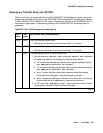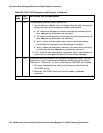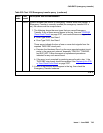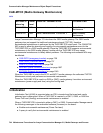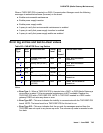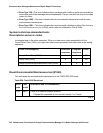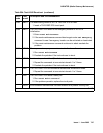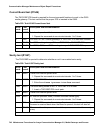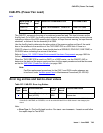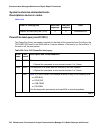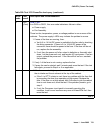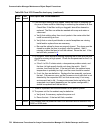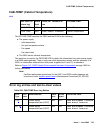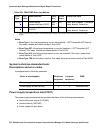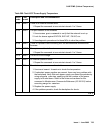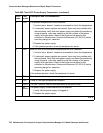
CAB-PFL (Power Fan Lead)
Issue 1 June 2005 749
CAB-PFL (Power Fan Lead)
G650
The CAB-PFL represents the state of a combined power/fan lead. This lead is known as the
AuxSig lead. On a G650, the AuxSig output signal is a ground referenced relay contact closure
indicating a failure of the 655A power supply outputs, hot spot thermal warning, hot spot thermal
shutdown, or failure of the fan assembly in a G650.
Use the AuxSig lead to determine the alarm state of the power supplies and fans if the serial
bus or the interface to the serial bus of the TN2312BP IPSI in a G650 fails. If there is a
CAB-PFL alarm in a G650 carrier, there should also be a SER-BUS, POW-SUP, CAB-TEMP, or
PS-RGEN alarm indicating the source of the failure.
Refer to Figure 115: G650 Cabinet Environmental Hardware Components
on page 1959 for
further information.
When the TN2312BP IPSI is used in a CMC1 or a G600 carrier, use the CAB-PFL MO to
determine the status of the power supply and fans, but the repair procedure should be the same
as that for RMC-ENV (Power/Fan Sensors)
on page 1951.
Note:
Note: Fan/filter replacement procedures for the CMC1 and G600 media gateways are
to be found under Variable-speed fans
in Maintenance Procedures (03-300192).
Error log entries and test-to-clear values
Note:
a. Error Type 1—The AuxSig lead is active. Run test environment location and follow
the repair steps for Test #1533.
MOs name (in
alarm log)
Alarm
level
Initial SAT command to run Full name of MO
CAB-PFL MIN test environment location Power Fan Lead
CAB-PFL MAJ test environment location Power Fan Lead
Table 257: CAB-PFL Error Log Entries
Error
Type
Aux
data
Associated test Alarm
level
1
1. The alarm level of CAB-PFL is adjusted to be the same as the highest active alarm level for SER-BUS,
POW-SUP, CAB-TEMP, or PS-RGEN, or it will be a MAJOR alarm if no G650 alarms in that category are
found.
On/Off
board
Test-to-clear value
1 (a
) Power/Fan lead query
test (#1533)
MAJ
MIN
OFF test environment
location



